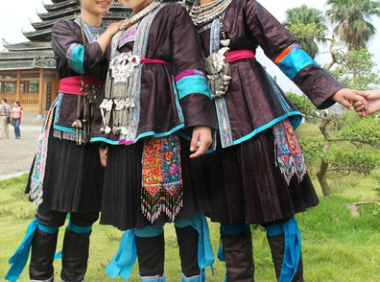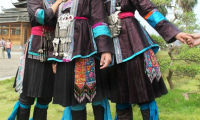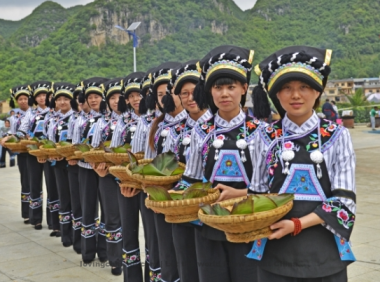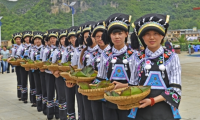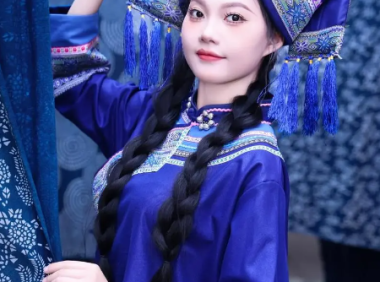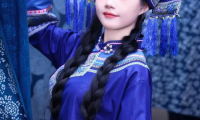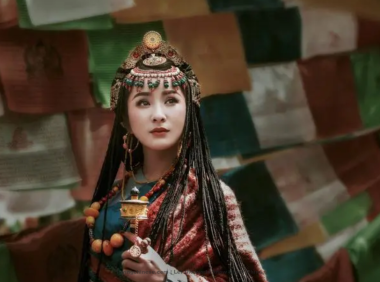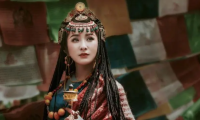movies&tv
-
The People’s Artist, Zhao Dan 人民艺术家赵丹 ~ Chinese Movies&TV
Basic information 本 名赵丹 外文名Feng'ao Zhao 出生地江苏省扬州市 出生日期1915年6月27日 逝世日期1980年10月10日 毕业院校上海美术专科学校 政治面貌中共党员 Character experience In 1916, when Zhao Dan was two years old, he moved with his parents to Nantong. His father opened a cinema in Nantong and was influenced by his family in his youth, with a passion for art. In middle school, I once organized a "Little Drama Society" with my friends Gu Ke, Qian Qianli, Zhu Jinming, and performed some progressive plays. In 1931, he was admitted to the art college founded by Liu Haisu, where he studied landscape painting under Huang Binhong and Pan Tianshou. During this time, he participated in the American Drama Troupe, Xindi Drama Society, and Tuosheng Drama Society, and actively participated in the activities of the "Leftist Drama Federation". Later, he changed his name to "Zhao Dan" and went deep into factories, cities, and schools to perform anti Japanese and salvation plays. In 1932, she was spotted by the celebrity film company Li Pingqian and officially entered the entertainment industry by playing a playboy in the silent film "Pipa Spring Lament". In 1933, he joined the Chinese Leftist Dramatists Alliance; In the same year, he co starred with Gu Lanjun in the drama film… -
Famous Chinese Actor, Kwan Tak-hing 中国著名演员关德兴 ~ Chinese Movies&TV
Paul Mauriat's History Born on June 27, 1905 in Guangzhou, with ancestral roots in Chikan Town, Kaiping City, Guangdong Province, he was the second child from a poor family. His father passed away due to illness in his early years. At the age of 12, Guan Dexing began to earn money through hard work and worked in the construction industry. At the age of 13, he worked as a waiter in a restaurant in Singapore and started learning opera, apprenticing under the young master New Taipei. At the age of 16, Guan Dexing went to Guangzhou to participate in the "Red Boat Troupe" and often performed in rural areas. Later, in order to further his studies in Cantonese opera, he became a disciple of Liang Yuanheng. He has a passion for screenwriting and has written a long novel, but it has never been published.In 1928 (at the age of 23), Guan Dexing got married and his wife was the daughter of actor "Zhajiao Sheng". Later, they had a son named Guan Hanquan. In 1932, he starred in the movie 'Song Lovers' in San Francisco, USA. In 1935, he starred in 'Yesterday's Song'. During the War of Resistance Against Japan, he… -
Chinese star: Donnie Yen甄子丹
Basic information real name:甄子丹 Foreign Name:Donnie Yen Birthplace: Guangzhou, Guangdong Province, China Date of birth: July 27, 1963 Graduation institution: Beijing Military Academy Constellation: Leo Height: 173 cm Martial artist and Hong Kong action star Donnie Yen was born in Canton, China, on July 27, 1963 to newspaper editor Klyster Yen and martial arts master Bow Sim Mark. At the age of four, Donnie started taking up martial arts from his mother who taught him tai chi and wushu until he was eleven when he moved to Boston, MA, with his family. From there, Donnie continued with tai chi and wushu but soon also began experimenting with various others martial art styles, such as taekwondo, kickboxing and boxing, after developing a huge interest in martial arts. When he was sixteen, his parents sent him to Beijing Wushu Academy so he could train Chinese MA under Master Wu Bin, well known as the coach of Jet Li. He underwent intensive training for three years. After those years passed by, he was about to leave back to the States, but made a side trip to Hong Kong, and there he was accidentally introduced to famous Hong Kong action director Woo-ping Yuen, who… -
Chinese star: Chris Lee 李宇春
Basic information real name:李宇春 Foreign Name:Chris Lee Nickname:小宇、春春、小葱 Birthplace: Chengdu, Sichuan Province Date of birth: March 10, 1984 Graduation institution: Sichuan Conservatory of Music Constellation: Pisces Blood type: Type A Height: 175 cm Occupation: singer, actress Income: 40.9 million yuan (US$6.62 million) Wealth ranking: 30 Media Exposure Ranking (Internet): 19 Media Exposure Ranking (Newspapers): 25 Media Exposure Ranking (Magazine &TV): 36 Chris Lee was the first super star chosen by ordinary people and she was rewarded the honorary title of “Asia Hero” by Time magazine. Her latest album “Old If Not Wild” was released in September of 2012. She participated in much of the album’s production. Additionally, she also participated in Lai Shengchuan’s drama “A Dream Like a Dream.” Early experiences On March 10, 1984, Li Yuchun was born into an ordinary family in Chengdu, Sichuan. His father was a railway police officer, and his mother took care of the family's daily life. Her grandfather, who is a professor of Chinese at Sichuan University, gave her a name, which means: I hope she will always be full of vitality and spring like the spring of the universe. Since the age of 12, Li Yuchun has been living on campus and studying. Her upbringing is strict, and… -
Chinese star: Huang Xiaoming 黄晓明
Basic information real name:黄晓明 Foreign Name:Huang Xiaoming Birthplace: Shinan District, Qingdao City, Shandong Province Date of birth: November 13, 1977 Graduation institution: Beijing Film Academy Constellation: Scorpio Blood type: O type Height: 179 cm Occupation: Actor Income: 75.9 million yuan (US$12.3 million) Wealth ranking: 9 Media Exposure Ranking (Internet): 40 Media Exposure Ranking (Newspapers): 14 Media Exposure Ranking (Magazine &TV): 13 Huang Xiaoming, one of the most famous young actors in China, became the boss himselfwhen he opened the Huang Xiaoming Studio in 2011. His two films “American Dreams inChina” and “White Haired Witch” were recently released. His performances in these two films received the praise of many critics. In 2013, he topped the list of biggest earning stars with 392million yuan (US$63.43 million). Character experience Early experiences In 1984, Huang Xiaoming was spotted by people from a film studio and invited to play the lead role in a children's movie. However, due to his introverted personality and shyness when encountering strangers, he was replaced by people from the studio. In the summer of 1996, Huang Xiaoming participated in an interview at the Beijing Film Academy and received recognition from Professor Cui Xinqin; In the same year, he was admitted to the undergraduate program of the… -
Chinese star: Andy Lau 刘德华
Basic information real name:刘德华 Foreign Name:Andy Lau Nickname:华仔、华Dee、华哥 Birthplace: Tai Hang Village, Tai Po Town, New Territories, Hong Kong Date of birth: September 27, 1961 Graduation institution: Ke Li High School, 10th Wireless Artist Training Class Constellation: Libra Blood type: AB type Height: 174 cm Occupation: Actor, Singer, Producer, Lyricist Occupation: Singer, actor Income: 47 million yuan (US$7.6 million) Wealth ranking: 21 Media Exposure Ranking (Internet): 8 Media Exposure Ranking (Newspapers): 5 Media Exposure Ranking (Magazine &TV):1 Andy Lau, one of the Four Heavenly Kings of Canto pop in 1990s Hong Kong, is a singer, actor and producer. He starred in the touching movie “A Simple Life” and has picked up awards at Taiwan’s 48th Golden Horse Awards as well as Hong Kong’s 31th Hong Kong Film Awards. His new movie “Blind Detective” will be released soon. The movie was his sixth time working with Sammi Cheng, adding to the public’s anticipation. Early experiences Liu Dehua, formerly known as Liu Furong, was born in Tai Hang Village, Tai Po Town, New Territories, Hong Kong, China. He is the fourth child in the family, with three older sisters, one younger brother, and one younger sister. Before the age of 5, Andy Lau lived with his grandfather…
Poems
Nationality
-
Chinese Nation – Dong nationality
Dong nationality is a minority nationality in China, whose language is Dong language. It belongs to the Dongshui branch of the Zhuang Dong language group in the Sino Tibetan language family and believes in many gods. The ancestors of the Dong nationality are called "the head of Guizhou" in the literature before the pre-Qin period. It is generally believed that the Dong nationality developed from a branch of ancient Baiyue. The Dong people are mainly engaged in agriculture, and the agriculture is mainly rice planting. Rice planting has a long history, and they are also engaged in forestry. The production of agriculture and forestry has reached a very high level. There are many basins called "Bazi" in the Dong area. Dong people are mainly distributed in Qiandongnan Miao and Dong Autonomous Prefecture and Tongren area of Guizhou Province, Xinhua Dong Autonomous County, Huitong County, Tongdao Dong Autonomous County, Zhejiang Dong Autonomous County, and Jingzhou Miao and Dong Autonomous County of Hunan Province, Sanjiang Dong Autonomous County, Longsheng Miao Autonomous County and Rongshui Miao Autonomous County of Guangxi Zhuang Autonomous Region, Enshi Tujia Miao Autonomous Prefecture of Hubei Province, etc. Diet Dong people eat rice as their staple food, and they…... -
Chinese Nation – Bouyei
Bouyei, a large minority in Southwest China, is spoken in the Bouyei language. The Sino Tibetan language belongs to the Zhuang Dai branch of the Zhuang Dong ethnic group. It is closely related to the Zhuang language and is commonly used in Chinese. The Bouyei people evolved from the Liao people in ancient times, mainly in agriculture. The ancestors of the Buyi people began to grow rice very early, which is known as the "rice nation". Bouyei people are mainly distributed in Guizhou, Yunnan, Sichuan, and other provinces, among which Guizhou Province has the largest Buyi population, accounting for 97% of the national Buyi population. They mainly live in Qiannan and Qianxinan Buyi and Miao Autonomous Prefectures, as well as Anshun City, Guiyang city, and Liupanshui City. The rest of the cities, prefectures, and districts are scattered, and a small part of them live in Vietnam. Language Bouyei language belongs to the Zhuang Dong language family of the Sino Tibetan language family and has a close kinship with the Zhuang language. The northern dialect of the Zhuang language is basically the same as the Buyi language in Wangmo, Cheng, Dushan, Pingtang, Anlong, and Xingyi counties of Guizhou. Due to the…... -
Chinese Nation – Bourau
The Bourau nationality, formerly known as the Zhuang nationality, is a minority with the largest population in China. The national language is Zhuang, belonging to the Zhuang Dai branch of the Zhuang Dong language family of the Sino Tibetan language family. The Zhuang nationality originated from "Xi'ou" and "Luo Yue" in the Lingnan area recorded in Han historical records in pre-Qin, Qin, and Han Dynasties. It is distributed in 31 provinces, autonomous regions, and municipalities directly under the central government in China, mainly in the south, starting from Lianshan Zhuang and Yao Autonomous County in Guangdong Province in the East, Wenshan Zhuang and Miao Autonomous Prefecture in Yunnan Province in the west, and Congjiang County in Qiandongnan Miao and Dong Autonomous Prefecture in Guizhou Province in the north, South to Beibu Gulf. Guangxi Zhuang Autonomous Region is the main distribution area of Zhuang nationality. Diet The Zhuang people in most areas are used to eating three meals a day, while the Zhuang people in a few areas also eat four meals, that is, a small meal is added between lunch and dinner. Breakfast and Chinese food are relatively simple, generally eat porridge, dinner for dinner, eat dry rice, dishes are…... -
Chinese Nation – Tibetan
Tibetan is one of 56 nationalities in China and the indigenous people of the Qinghai Tibet Plateau. In China, it is mainly distributed in the Tibet Autonomous Region, Qinghai Province, Western Sichuan Province, Diqing of Yunnan Province, Gannan of Gansu Province, and other regions. Besides, it is also distributed in India, Bhutan, the United States, Canada, Europe, Australia, and other regions. Lhasa is the holy land of the Tibetan people. At present, there are about 7.5 million Tibetans in the world, about 7 million in China (2016), and the conservative estimate of the Tibetan population is more than 10 million. Tibetan history is an integral part of Chinese history and one of the oldest ethnic groups in China and South Asia. After the establishment of the Tubo government in the early 7th century, the contact between Tubo and Tang Dynasty became more and more frequent. From the 10th century to the 16th century, the ancient Tibetan culture flourished. In 1951, Tibet was peacefully liberated. Tibetans have their own language and writing. Tibetan belongs to the Tibetan branch of Tibeto Burmese language family of Sino Tibetan language family, which is divided into three dialects: Wei Tibetan, Kang, and Ando. Tibetans generally…...

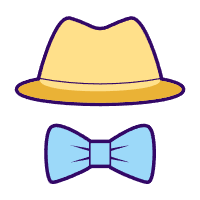

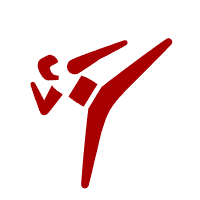
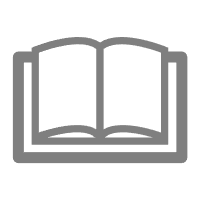











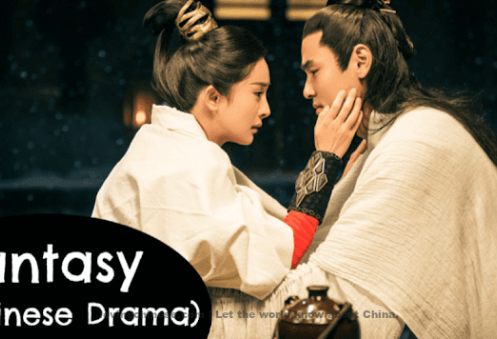

![That stretch of sea 那片海 ~ [Chinese Songs]Lyrics Pinyin](https://www.lovingchinese.com/wp-content/uploads/thumb/2023/09/fill_w380_h282_g0_mark_image-291.png)
![That stretch of sea 那片海 ~ [Chinese Songs]Lyrics Pinyin](https://www.lovingchinese.com/wp-content/uploads/thumb/2023/09/fill_w200_h120_g0_mark_image-291.png)


![See my 72 changes 看我72变 ~ [Chinese Songs]](https://www.lovingchinese.com/wp-content/uploads/thumb/2023/09/fill_w380_h282_g0_mark_image-289.png)
![See my 72 changes 看我72变 ~ [Chinese Songs]](https://www.lovingchinese.com/wp-content/uploads/thumb/2023/09/fill_w200_h120_g0_mark_image-289.png)
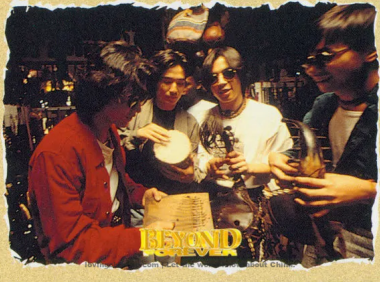
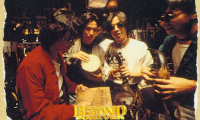
![Can’t Live without You 离不开你 ~ [Chinese Songs]](https://www.lovingchinese.com/wp-content/uploads/thumb/2023/09/fill_w380_h282_g0_mark_image-58.png)
![Can’t Live without You 离不开你 ~ [Chinese Songs]](https://www.lovingchinese.com/wp-content/uploads/thumb/2023/09/fill_w200_h120_g0_mark_image-58.png)








